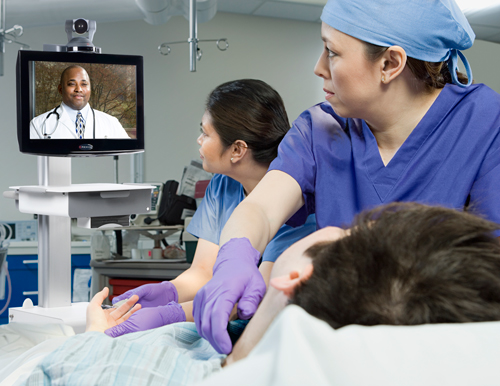The Various Types of Telemedicine in Healthcare

In the health care and medical world, the demand for innovative technology coming from both consumers and providers has become higher than ever. Health care providers want efficiency, while consumers want more convenience. The health care industry is greatly influenced by this demand. In its struggle to adapt, the modern health care industry has developed various solutions, including the telehealth or telemedicine field.
This alternative is becoming an increasingly attractive option for health care and medical services delivery. Patients and practitioners alike are adopting a multitude of telemedicine technologies available today. Various video communication platforms such as ezTalks are employed in providing telemedicine services. In order to effectively take advantage of these new opportunities, you have to know what the different types of telemedicine services available are today.
Overall, there are four main types of telemedicine in healthcare, including remote monitoring, store-and-forward, real-time interactive services, and mobile health platforms. In overall health care, each of these particular types of telemedicine system has its beneficial role to play. Telemedicine services can offer many benefits for both patients and health care workers when utilized properly, especially when paired with tools like a Medical Appointment Scheduler to streamline consultations and reduce scheduling conflicts.

Remote Monitoring
Remote monitoring is also known as self-testing or self-monitoring. This type of telemedicine service uses a range of technological devices in order to remotely monitor clinical signs and health of a patient. Remote monitoring is extensively used in the management of chronic diseases such as asthma, diabetes mellitus, and cardiovascular disease. Among the benefits of telemedicine service are included greater patient satisfaction, more frequent monitoring, and cost effectiveness. The outcomes are generally similar to those obtained in professional patient tests even if there is some risk of inaccuracy of the results in tests conducted by the patients themselves.
Store-and-Forward
It is not necessary anymore for a medical practitioner to meet the patient in person, thanks to the store-and-forward telemedicine service. With modern information and communication technologies, data such as bio-signals or medical images can be acquired from the patient and then stored or sent to the specialist when needed. Medical fields of pathology, radiology, and dermatology are those using the most this new practice. This technique can save time. It can also allow, with proper structure and care, that medical practitioners serve the public more fully with their services. However, there is also the potential to cause misdiagnosis and other complications, as this telemedicine service relies on documented images and information and a history report, rather than a physical examination.
Real-Time Interactive Services
This live or real-time interactive telemedicine services can help patients requires medical attention by providing some immediate advice. There are various mediums utilized for this purpose, including online communication platform such as ezTalks. An assessment can follow undertaking consultation and medical history, similar to face-to-face appointments. Here are some examples of this type of telemedicine services:
Teleneuropsychology includes neuropsychological consultation and assessment conducted with patients over the phone. Standard evaluation techniques of cognitive disorders are implemented in order to assess the patient via video technology.
Telenursing provides remote nursing services by using communication technology. Consultations can be made using web technologies or over the phone in order to provide a diagnosis and monitor health symptoms and conditions.
Telepharmacy provides remote pharmaceutical advice to patients in case that it is not possible to have direct contact with a pharmacist. Patients can be offered advice over the phone and medications to be monitored.
Telerehabilitation performs clinical assessment and therapy for rehabilitation patients by using communication technology. This usually includes video conferences and webcams.
Mobile Health Platforms
In today's modern world, there is a strong tendency that patients are involving more in monitoring their own health through the use of smartphone applications and wearable devices designed to help them track and improve various health indicators.
This information and these devices can be also used by policymakers, practitioners, and leaders in the medical and health care industry in order to identify and act on health trends, inform treatment decisions, and even provide outgoing communication to the public.
There are already many mobile health platforms available today that provide telemedicine solutions. Analysts forecast that the market for telemedicine providers will continue to grow. Leveraging digital solutions for healthcare can drive this growth by offering scalable, efficient, and innovative tools to enhance telemedicine services. It is expected that this market will develop with a continued emphasis on patient-centered care and healthcare innovation.
Conclusion
A telemedicine service provides a specialty consultation, advice or care to patients where the recipient and provider are located at different geographic locations. Such services originate typically from hospitals, health care systems, or large medical group practices that employ highly experienced healthcare and medical specialists and a wide range of experts.
The specialists are using a variety of information and communication technologies to communicate with patients at physically separate locations. These technologies may range from simple image capture and transmission for review and storage to complex live, interactive video conferencing systems that feature some associated examination devices.